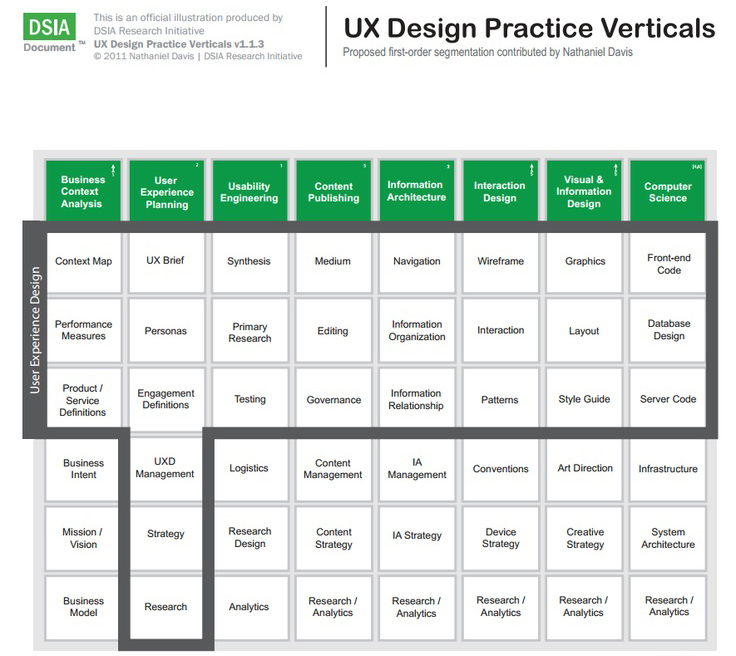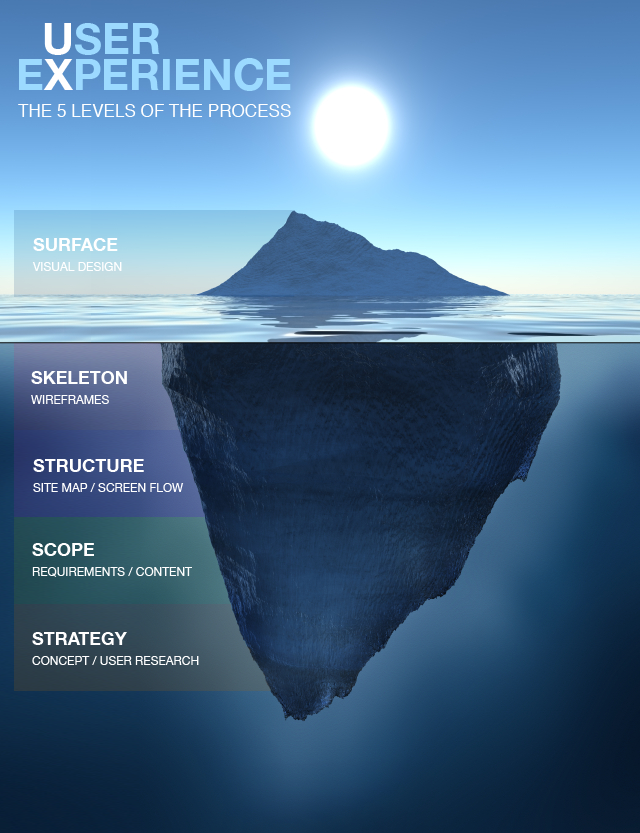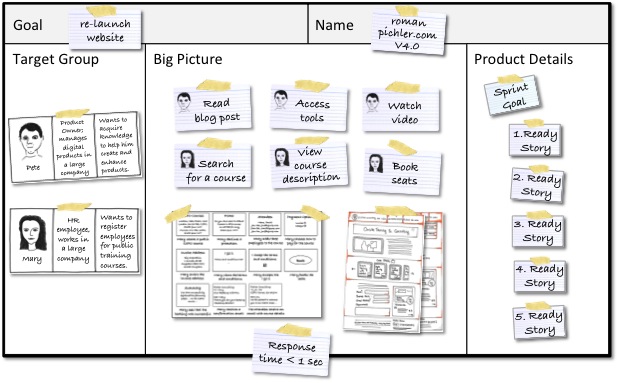Management: Notes and Articles
An assortment of Product Management notes and articles to help improve our process through research and proven results.
A Product Manager’s Job
Product management is one of the hardest jobs to define in any organization, partially because it’s different in every company. I’ve had several recent conversations about “what is a product manager?” with friends who are taking their first product jobs or advancing in their product careers. I wanted to capture and share them here. Please share your feedback via notes.
Rise of the Product Managing Designer
The design team at Skillshare does a lot more than just design. We’ve learned that to be as effective as possible we need to break out of our traditional role and own much more of the overall product process.
User Experience for Product Designers
On small teams where time resources are limited user experience can often be overlooked. Over the past few months I’ve tried to develop a low impact UX cycle that designers and project managers can use to improve the quality of web apps without adding a lot of bloat to a project. This article will be written from the viewpoint of an app that is currently in-use. The UX process will vary slightly for a new product but the same basic principles exist. Below is a five-step process going through a development cycle that defines a detailed look at best practices in the UI/UX discipline.
Transitioning from User Experience to Product Management
“Becoming a product manager is a logical move for many UX practitioners, as it requires many of the same skills, traits, and competencies involved in crafting a user experience.”User experience (UX) professionals are increasingly becoming interested in the business aspects of what they do. At their core, the user experience roles focus on understanding user needs and creating useful and easy-to-use products that address those needs.
Product Managers: Who are these ‘mini-CEOs’ and what do they do?
In the world of technology, it’s often the engineers and designers that are among the most celebrated. They are the people who literally build amazing products that we enjoy, such as Instagram, Gmail, Twitter, Android, iOS, and other software, hardware, and services. But it’s not magic that helps guide them to take an idea from start to finish — that heavy responsibility rests on the shoulders of product managers (PM).
So You Want to Be a Business Designer?
You may know IDEO’s role in shaping the process known as design thinking and how that informed the first Apple mouse, the shopping cart, and the insulin pen for Type-1 diabetes.
Crafting Useful User Personas (Part 1 — Research)
When executed correctly, Personas can offer a valuable insight into your product’s requirements, outline the behavioural patterns of your users and in some cases even change the trajectory of a project. In this two-part series we explore the process we recently used at UX Connections to create useful user personas for a multinational client.
Why Companies Need Full-Time Product Managers (And What They Do All Day)
What is a product manager? What do product managers do all day? Most importantly, why do companies need to hire them? Good questions. The first confusion we have to clear up is what we mean by “product.” In the context of software development, a product is the website, application or online service that users interact with. Depending on the size of the company and its products, a product manager could be responsible for an entire system (such as a mobile app) or part of a system (such as the checkout flow on an e-commerce website across all devices).
How designers earn & keep their seat at the table
It’s no secret that good design is good business. In recent years, even the most engineering-driven companies are snatching up design talent as if it were going out of style.
Agile Is Not a Product Management Framework
Agile isn’t a process for product management. It’s a method for product development. Saying you use agile as your process for product management is like saying tasting your dishes as you’re cooking is your process for being a chef. Many chefs do this to ensure the output is as they expect and to make corrections along the way. But there’s more to being a great chef.
Why Product Thinking is the next big thing in UX Design
When thinking of User Experience, we often think of a simple, beautiful, and easy to use feature-set of a product, that makes the user’s life easier. But as a matter of fact, features are merely a small, fragile part of the product. They are only a few of many thinkable solutions for a user’s problem the product tries to solve. Thinking in products means thinking in specific user’s problems, in jobs to be done, in goals, and in revenues.
The Black Box of Product Management
PMs get sad when you ask them why they exist? There is a rite of passage in the product management world, where all PMs have experienced being asked: “What does a product manager do, anyway?”
Highlight
The single biggest mistake most product teams make is building technology for what they believe the user would want rather than what the actual end-user needs. Source
Highlight
We live in world of choice and yet paradoxically as humans we generally want fewer choices. We want less complexity. Source
Highlight
Bad design was further reinforced through a decade+ of building apps in a Windows era where we technologists were trained by the ever expanding menu options in every Microsoft product. We all created mini Cheesecake Factories. Source
Highlight
My philosophy is simply. You design your product for the non-technologist. The “Normal.” Give people fewer options, fewer choices to make. Give them the bare essentials. Design products for your mom. Source
Highlight
It’s much harder to create something simple that works well, then something complex.
Highlight
A usable system with in the niche of the target audience draws that audience in, generates it's own leads and drives towards a better engagement.
Highlight
When in Doubt, Leave it Out (Why Less is More). Minimalism beats clutter. Substance trumps verbosity. Source
Highlight
Designer: "Designers visualize Product Managers' dreams. Developers make the dreams work."
Design Manager: "Designers turn product manager's responsibilities into things customers dream about."
Quick Read: Two Keys to Building a Great Product
Pre-prototype
Customer-driven:
Narrow your focus to your target go-to-market end user. Find where they spend their time, where their pain is. Watch them in their natural environment.
Meaningful progress:
Consider doing a minimum of X interviews, and/or defining the output as being the top Y painpoints to start addressing.
MVP
Customer-driven:
Be insanely impatient to get an early working product in front of one user. That’s the hardest part, getting one person to the point where they would pay, or be seriously disappointed if you took the product away from them. super hard stage, from zero to one user. Then move from one user to ten, another extremely hard stage. Put your cell phone in the product, follow up with people as they use the product, and watch every motion they take using it. Start doing user testing as well.
Meaningful progress:
Live and die by activated user count. From zero to one, and from one to ten.
Growth phase
Customer-driven:
The product team should directly support their customers. When applicable work with sales to understand how to iterate on *validated* learnings - not “all i need to close every deal is XYZ” requests but actual records of painpoints, blockers, competitive landscape, potential for product differentiation, shortcomings against existing solutions, etc. It helps here to have consultative sales folks who don’t do “feature dumps” but rather do a great, scalable job of customer pain discovery. If product/dev can overhear these conversations some magic can happen :)
Meaningful progress:
Measure, chart and distribute to the team: active users, activation rate, recurring revenue, net churn, referral loop, tickets/customer (whatever makes the most sense as a yardstick for product/market fit). Company demo (monthly) of new features LIVE for real customers, not mockups or qa.
Mature product
Customer-driven:
Record and distribute top support inquiry drivers, measure decrease in these drivers month over month. Heavy use of user testing to optimize the core flows and usage patterns in the product.
Meaningful progress:
Measure, chart and distribute to the company: tickets/customer, call drivers (and delta month-over-month), uptime/availability, performance/speed. Continue company demos, include performance improvements in addition to features.
Quick Read: UX Design Process


Quick Read: The Product Canvas
A Sample Canvas

Putting the User First

Learning and Emergence

The Sections Explained

Quick Read: Getting Real About Agile Design
Time, research, and ideation have historically been designers’ comfort zones. They suit our natural aptitude for vision and intuition, and allow us to carefully synthesize nebulous things like “brand” and “user behavior” into objects developers love: specifications, sitemaps, layouts, and graphics.
Design process
“Best practice” suggests that designers should research iteration n+2, design iteration n+1, support iteration n and review iteration n-1. This is sound advice but should not be taken too literally: some stories will take longer to design than these arbitrary timeboxes. Designers should use their intuition and experience to flag up potentially complex stories in advance, giving themselves increased lead time. It’s bending the Agile rules, but should be encouraged if the product benefits.
Vision
Lack of coherent vision is a common weakness of Agile projects. This stems both from Agile’s modular nature and, to an extent, its inherent power balance. Product owners, for all their strengths, sometimes lack the tactics to appreciate the big picture. Unchecked, this can lead to vague, volatile requirements based on strategic whim, and products faithful to company daydreams, not customer reality. A telltale symptom of this malaise is the “horizon effect,” whereby potential problems are pushed repeatedly from view into future iterations, and the designer is unsure whether the solution works as a holistic whole until it is complete.
Vision
Lack of coherent vision is a common weakness of Agile projects. This stems both from Agile’s modular nature and, to an extent, its inherent power balance. Product owners, for all their strengths, sometimes lack the tactics to appreciate the big picture. Unchecked, this can lead to vague, volatile requirements based on strategic whim, and products faithful to company daydreams, not customer reality. A telltale symptom of this malaise is the “horizon effect,” whereby potential problems are pushed repeatedly from view into future iterations, and the designer is unsure whether the solution works as a holistic whole until it is complete.